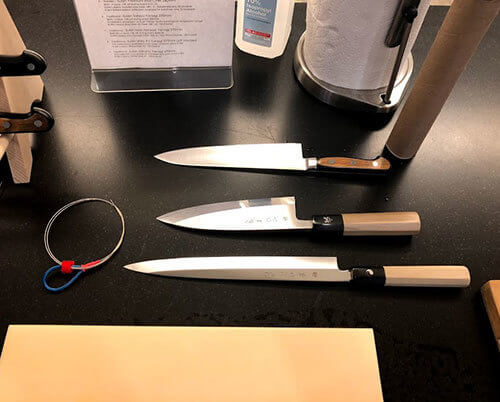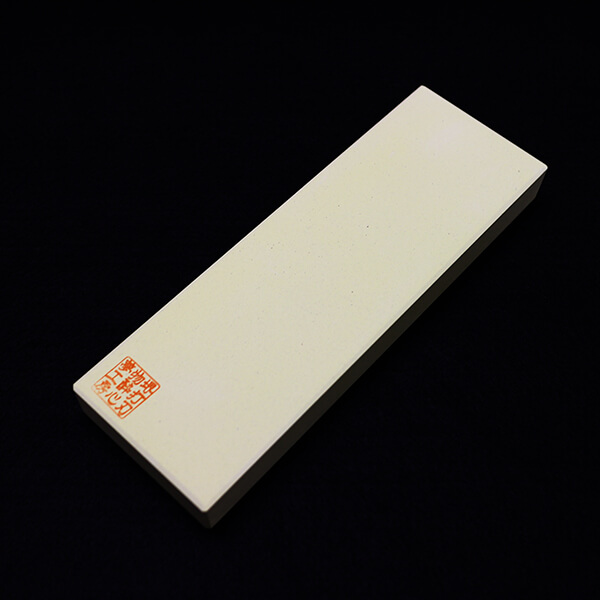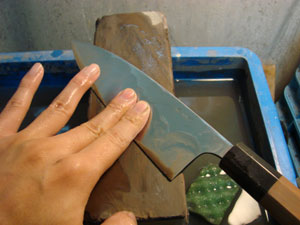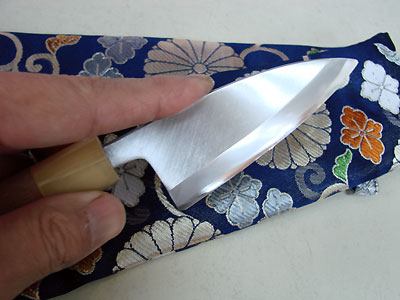Returning to Japan

It’s not that I went overseas, but rather, my knife came back from repairs abroad. The blade returned after getting a new handle and some sharpening, and when I saw how it had been sharpened, I was stunned! The edge was so thin it fluttered like aluminum foil… and it had been reshaped into a Turukubi (crane neck) style. Luckily, the shinogi line was still intact, so there was hope for restoration!
So, I got to work on the sharpening repair. Fixing the Turukubi meant restoring the tip’s curve, which required me to grind away about 15mm from the tip—something I didn’t want to do, but it was necessary. I carefully reshaped it to minimize any loss in length.
The customer had sharpened the edge so thin, but instead of making it even thinner, I re-sharpened it to improve the cutting performance. Specifically, I focused on sharpening the kiriba (bevel) rather than the edge itself, creating a stronger edge with better cutting flow. The idea was not to cut with the thinness, but with the grip and flow of the blade.
I tried to bring out the feeling of ‘this is how I want it sharpened!’ in the knife. Even if we don’t speak the same language, I hope they can feel it when they use it.
Ideally, I’d have liked to sharpen it from the ground up to avoid it becoming a Turukubi, but that’s a job for a professional sharpener, and it’s beyond my skill. So, I did what I could with the current condition.
While Japanese cuisine is popular all over the world, I feel like the use of tools like knives isn’t as widely understood as the recipes are. It would be great to spread the potential of Japanese knives as the sharpest culinary tools in the world, but it’s hard to do that as an individual…
At the end of the day, as long as the dish gets made, the tool has done its job, right? Maybe I’m thinking this way just because I’m in the knife business…
- 2012-05-28





